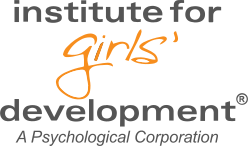This fall, we observed Learning Disabilities, ADHD, and Dyslexia Awareness Months. At the Institute and Flourish, we aim to help families, schools, and communities better understand the unique challenges children with these conditions face.
Which tasks can be affected by learning disabilities and ADHD?
Every child learns in their own way, but for kids with learning disabilities or ADHD, tasks like focusing, reading, or remembering instructions can be extra difficult.
What are the signs that my daughter may have ADHD, dyslexia, or a learning disability?
Unlike boys, who might display hyperactive behaviors like running around or being physically restless, girls with ADHD may show more subtle symptoms. One common overlooked sign is daydreaming or being “lost in thought.” A girl with ADHD might seem disconnected or like she’s “in her own world” during class or conversations. This quiet inattentiveness can be mistaken for shyness or a lack of interest, rather than a sign of ADHD. Another key sign is emotional sensitivity and mood swings. Girls with ADHD may struggle to manage emotions, leading to intense reactions to minor frustrations or feeling overwhelmed by criticism. They might also have trouble keeping friendships due to impulsive comments.
Dyslexia in girls can often go unnoticed, partly because they may work harder to “mask” their struggles or find ways to compensate, which can lead to some symptoms being missed. One overlooked sign is difficulty with spelling and writing. Girls with dyslexia may have trouble with spelling consistency and may avoid writing tasks or write with overly simple vocabulary to avoid errors. These difficulties can be attributed to lack of effort or anxiety, when, in reality, they stem from dyslexia-related challenges.
Why are rates of ADHD increasing?
A recent study by the CDC reveals that about 1 in 9 U.S. children (ages 3 to 17) have been diagnosed with ADHD, indicating a steady increase in diagnoses since previous years. Researchers suggest that this rise may be influenced by the COVID-19 pandemic’s effects on children’s mental health, as it prompted more assessments for behavioral issues like anxiety and depression, which sometimes led to additional ADHD diagnoses.
Is there still a gender gap in ADHD diagnoses?
The CDC study also highlights a narrowing gender gap in ADHD diagnoses, historically more common in boys, as mental healthcare providers gain a deeper understanding of ADHD’s diverse presentations. This trend points to both a broadening of diagnostic criteria and an increase in parental awareness, as more families seek assessments for children who may not display traditional hyperactivity symptoms but still struggle with focus and attention.
Why is it important to raise awareness about these forms of neurodivergence?
By raising awareness, we help reduce the misunderstanding and stigma that sometimes surrounds these conditions.
How can the team at the Institute and Flourish offer support?
Many of our therapists help clients recognize and honor their differences in learning needs while practicing self-compassion, self-advocacy, and utilization of their community of support. Our assessment team also helps clients and their families rewrite the narrative of their struggles; instead of viewing the client’s behaviors as signs of “laziness” or “defiance,” families learn to understand that children are doing the best they can with what they have.
What can parents do if they suspect their children may have ADHD, dyslexia, or a learning disability?
An assessment can be a helpful first step. Feel free to reach out to us at 626-585-8075 ext. 108 or Intake@IFGD.care to chat with our Client Relations team about assessment options.
By becoming more informed, parents can better advocate for resources and adjustments, like extra time on tests or using assistive technology, that make learning more accessible and enjoyable for their children.
We want to work together with the child or teen and their family and educational team to create environments where every learner has the tools and understanding they need to thrive!

